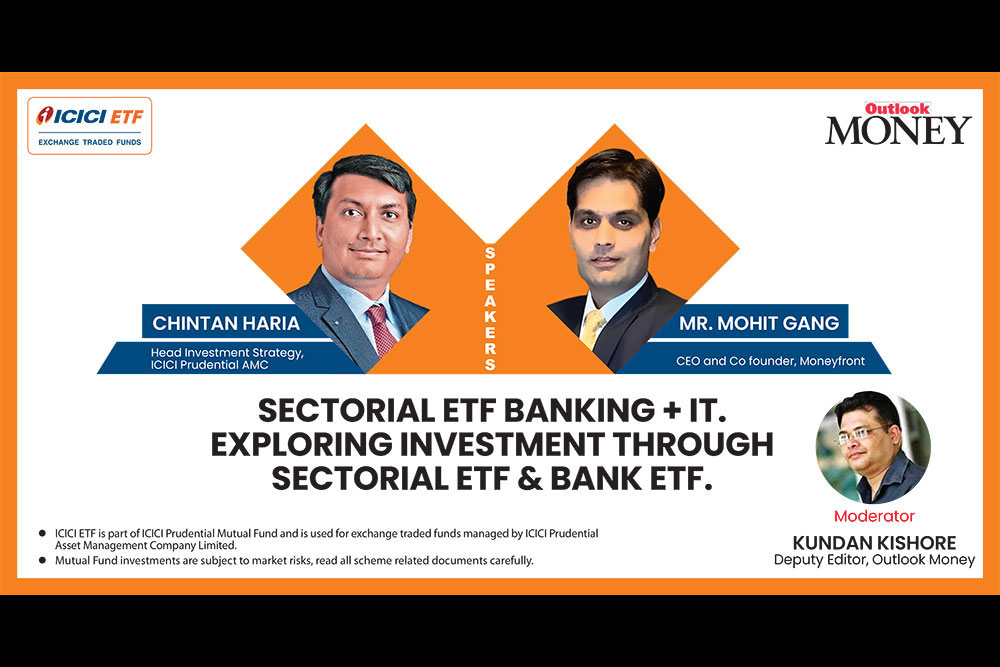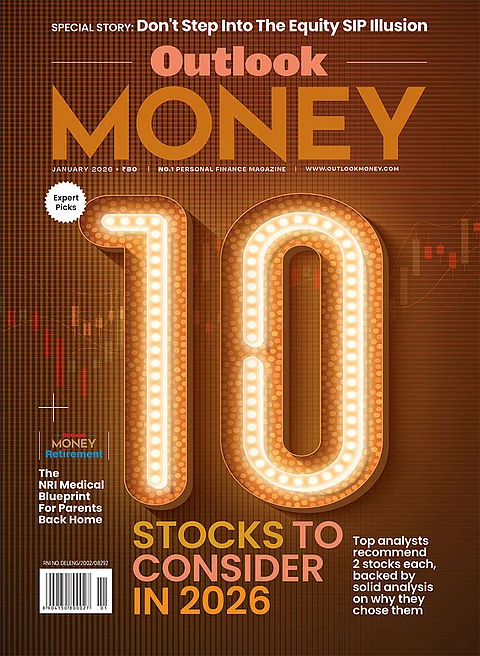In a recent discussion with Kundan Kishore, deputy editor of Outlook Money, Chintan Haria, the head of product development and strategy at the ICICI Prudential Mutual Fund, and Mohit Gang, the chief executive officer of Moneyfront, an investment platform, spoke about the importance of investing in sectoral and thematic exchange-traded funds (ETFs).
Here are some edited excerpts from the discussion.
How sectoral and thematic ETFs are different from thematic funds?
Chintan: Sectoral funds have a long history. They are actively managed funds where a mutual fund manager makes buying and selling decisions based on the assets within a particular sector, such as IT, pharma, or banking. On the other hand, ETFs, like IT ETFs or banking ETFs, aim to replicate the composition of a benchmark index precisely, including stocks and their respective weights. This strategy eliminates stock picking and changes in weights. Therefore, if the sector performs well, investors benefit as a whole. However, in actively managed thematic or sector funds, there might be stocks with lower weights in the benchmark that possess higher return potential, and this is where the active fund manager’s expertise comes into play.
Who should opt for a thematic or sectoral investment strategy?
Mohit: A sectoral fund is a strategic part of an investor’s tactical allocation. In simpler terms, when an investor is done with their standard investment choices, like large-, mid-, small-, and flexi-cap allocations, the core of their portfolio, they may venture into something more exotic and diverse. Just as one might opt for a pizza, pasta, or burger to break the monotony of their daily meals and elevate their mood, adding a sectoral fund brings a similar change to the investment strategy.
Chintan: Two criteria should be met to consider including a sectoral fund in one’s portfolio. First, the investor should have already allocated funds across various categories, establishing a strong investment foundation. Second, the investor should understand the market dynamics well and be actively aware of current events and trends.
What are popular thematic/sectoral ETFs in India?
Chintan: In the past, active funds were in the form of technology, banking, infrastructure, FMCG, and pharma funds within the sectoral space. However, on the passive side, India had few sectoral ETFs due to their relatively lower popularity. As the demand for ETFs grew, investors sought to create comprehensive portfolios using ETFs as their base. With India’s economy boasting leadership positions in various sectors—cement, steel, auto, pharma, IT, banking, etc.—investors now have multiple sectoral investment options on the passive side.
Why should one consider them?
Mohit: Investing in sectoral ETFs can yield substantial returns if the timing is right, akin to having both steady test match players and aggressive run scorers in a cricket team. However, timing is crucial, and investing at the wrong time may result in significant losses. Therefore, expertise in understanding specific sectors is essential to capitalise on the advantages of sectoral ETFs.
Chintan: Sectoral ETFs offer unique opportunities for higher returns, but their success depends on a thorough understanding of the sectors and effective timing in the market. Careful consideration and analysis are necessary before investing in these specialised ETFs.
Disclaimer
Mutual Fund investments are subject to market risks, read all scheme related documents carefully.







